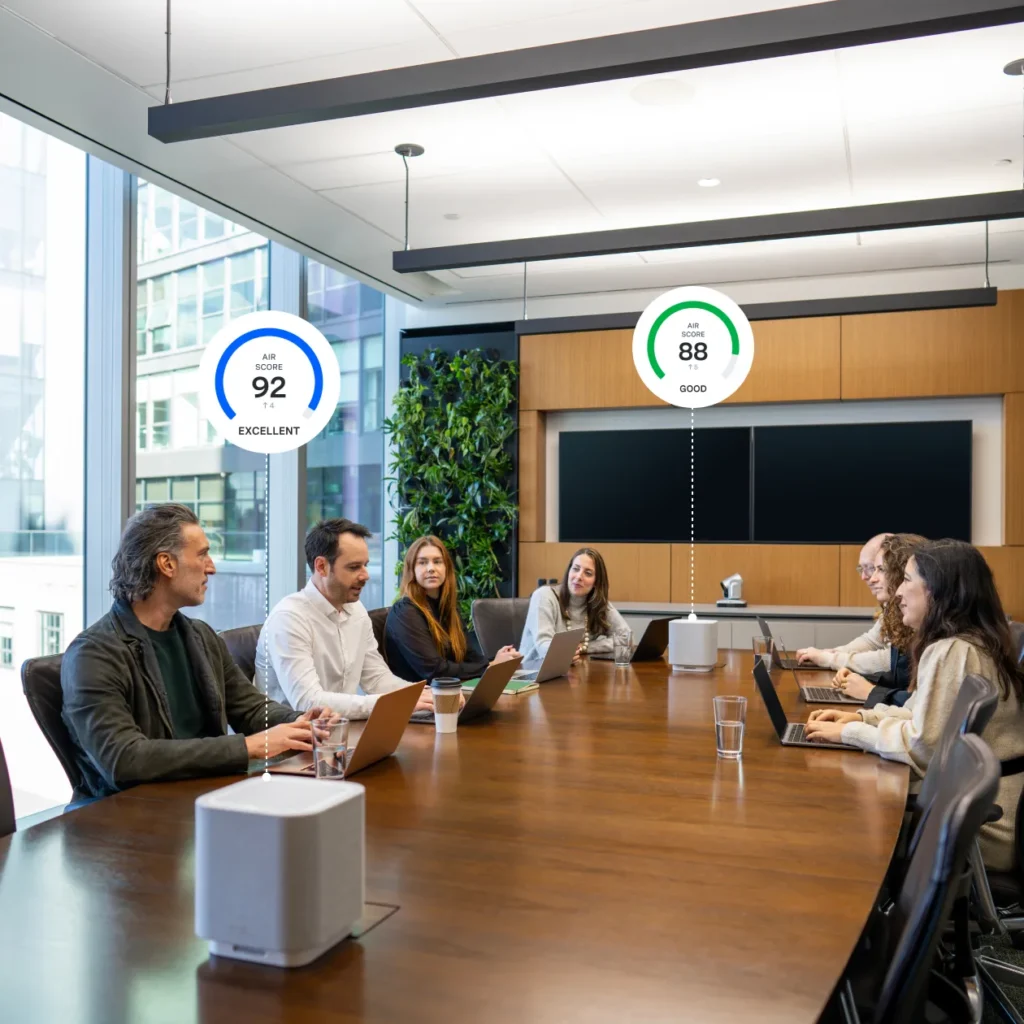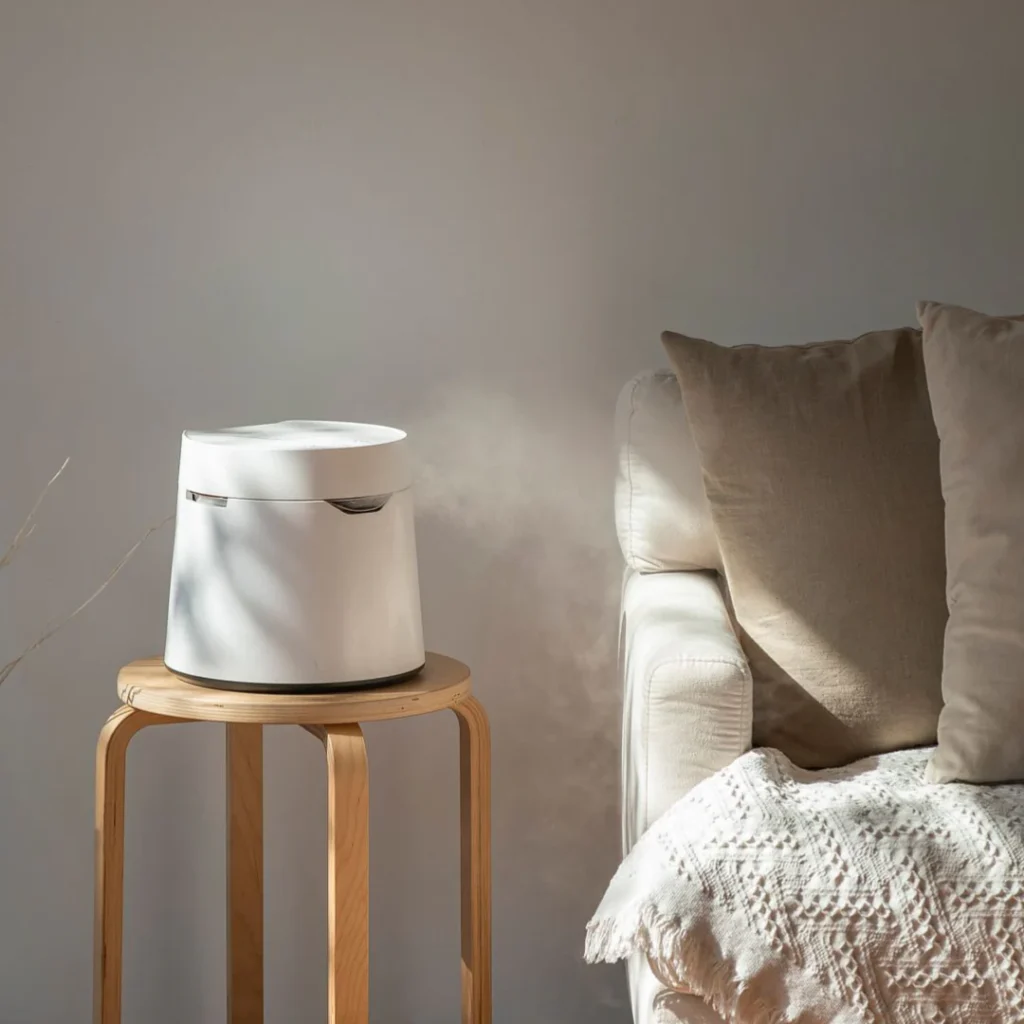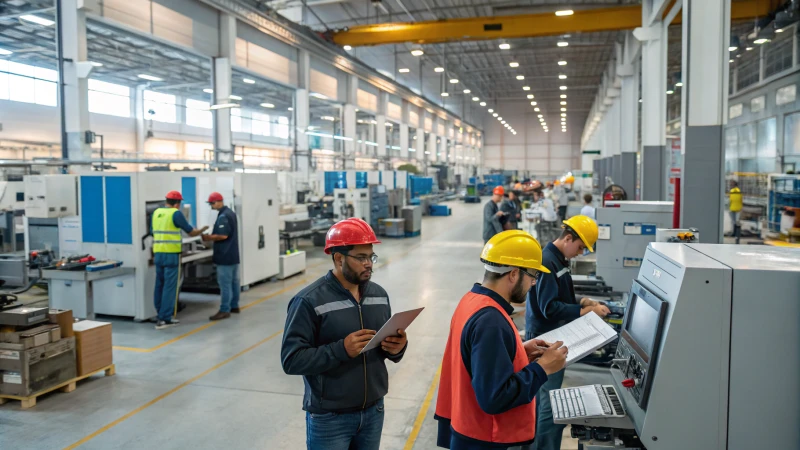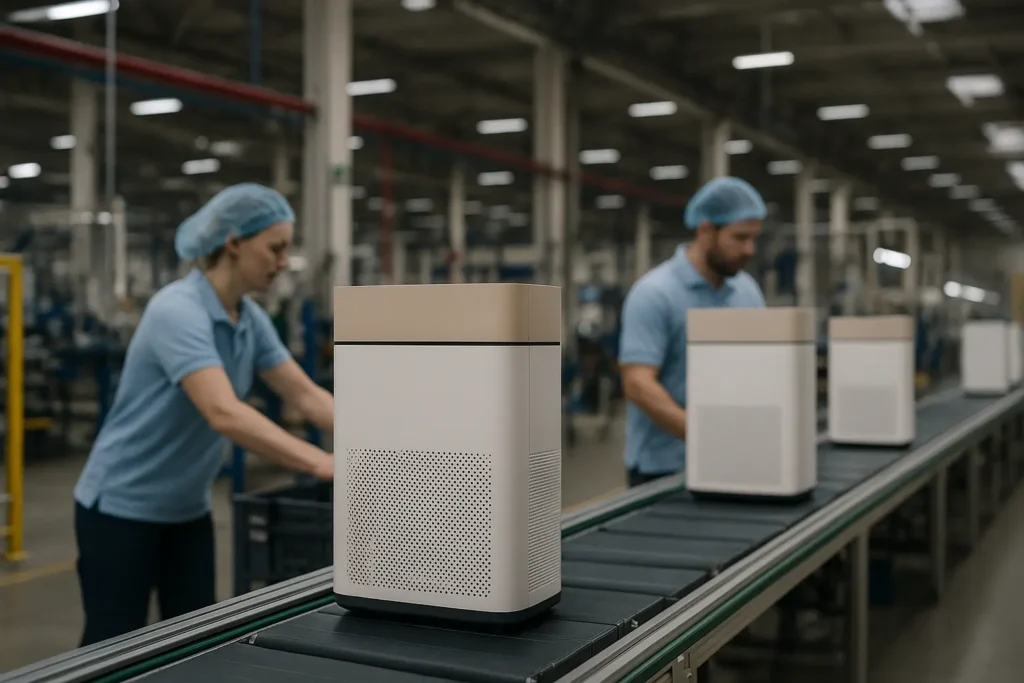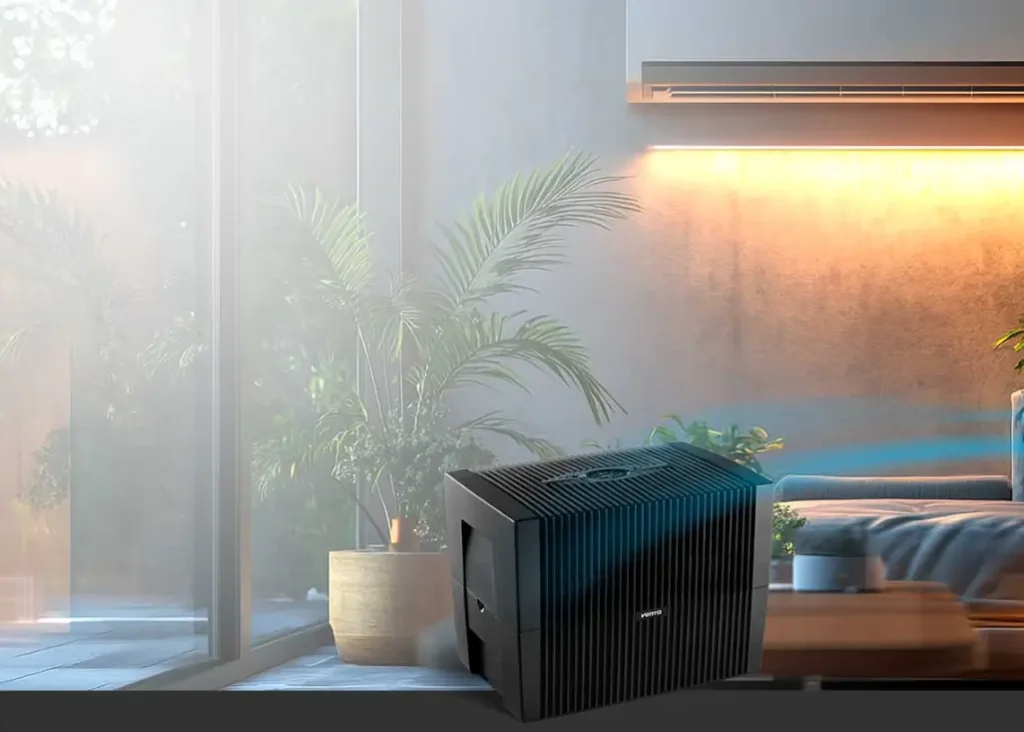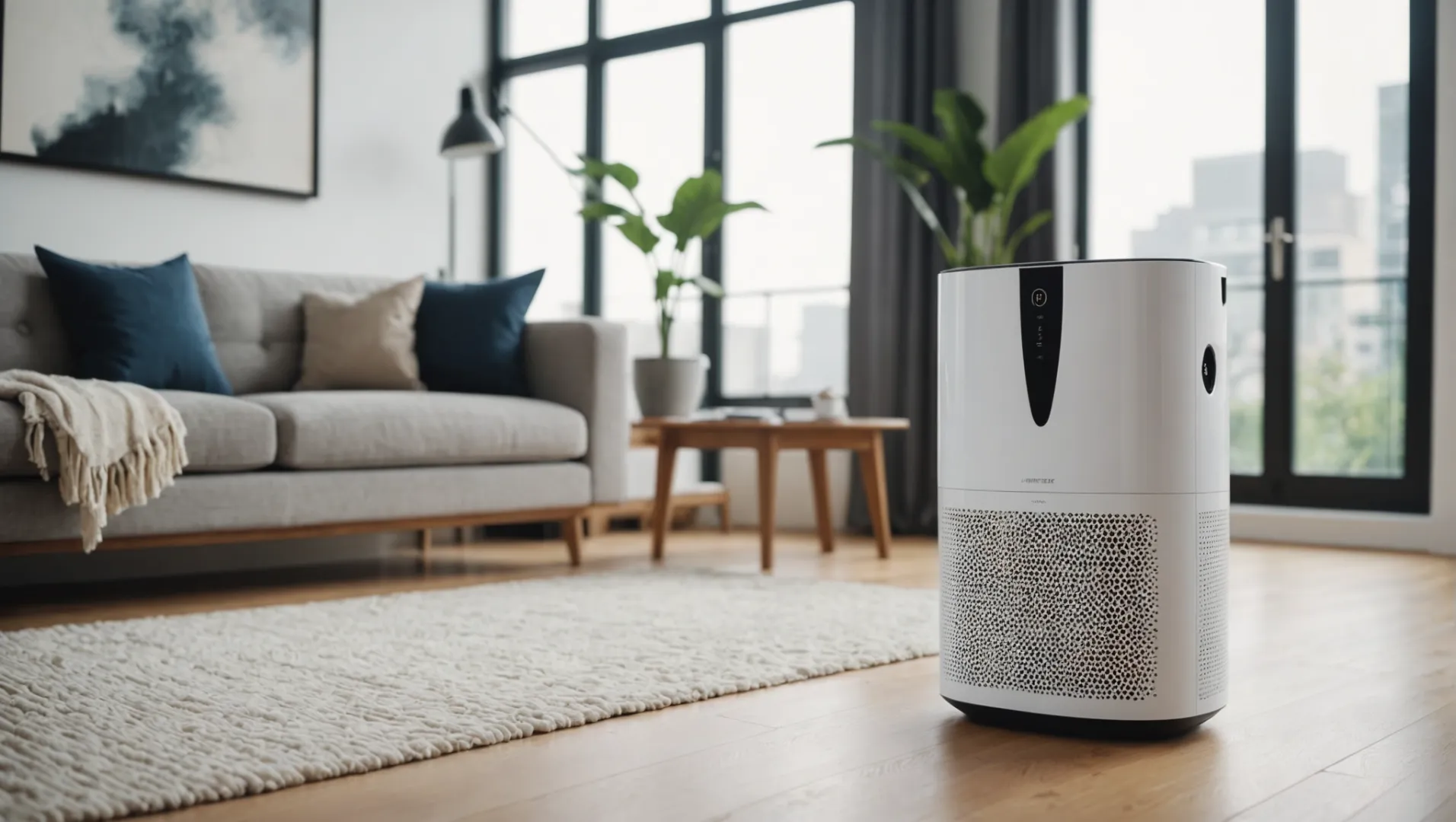
Вам когда-нибудь казалось, что аллергия - это слишком сложно? Когда на улице витает пыльца, а в помещении оседает пыль, я часто ищу облегчения.
Воздухоочистители, оснащенные системой True HEPA Фильтры эффективно удаляют пыль, плесень и другие аллергены с эффективностью 99,97%. Они помогают облегчить симптомы аллергии, улавливая частицы воздуха размером до 0,3 микрона, что делает их выгодным вложением в улучшение качества воздуха в помещении.
Но в этой истории есть нечто большее, чем просто эффективность HEPA фильтры. Понимание различных технологий и их применения поможет вам сделать лучший выбор для вашего дома. Давайте подробнее разберемся, как работают очистители воздуха и что нужно учитывать при их покупке.
Фильтры HEPA задерживают 99,97% частиц размером до 0,3 микрона.Правда
Фильтры True HEPA сертифицированы для улавливания 99,97% частиц, находящихся в воздухе, включая пыль и плесень.
Как HEPA Как работают фильтры в очистителях воздуха?
HEPA Фильтры известны своей высокой эффективностью в улавливании частиц, находящихся в воздухе, но как именно они работают в воздухоочистителях?
HEPA Фильтры работают, пропуская воздух через мелкую сетку, которая задерживает вредные частицы, такие как пыль, пыльца, плесень и бактерии. Правда HEPA Фильтры улавливают частицы размером до 0,3 микрона с эффективностью 99,97%, что делает их высокоэффективными в улучшении качества воздуха.
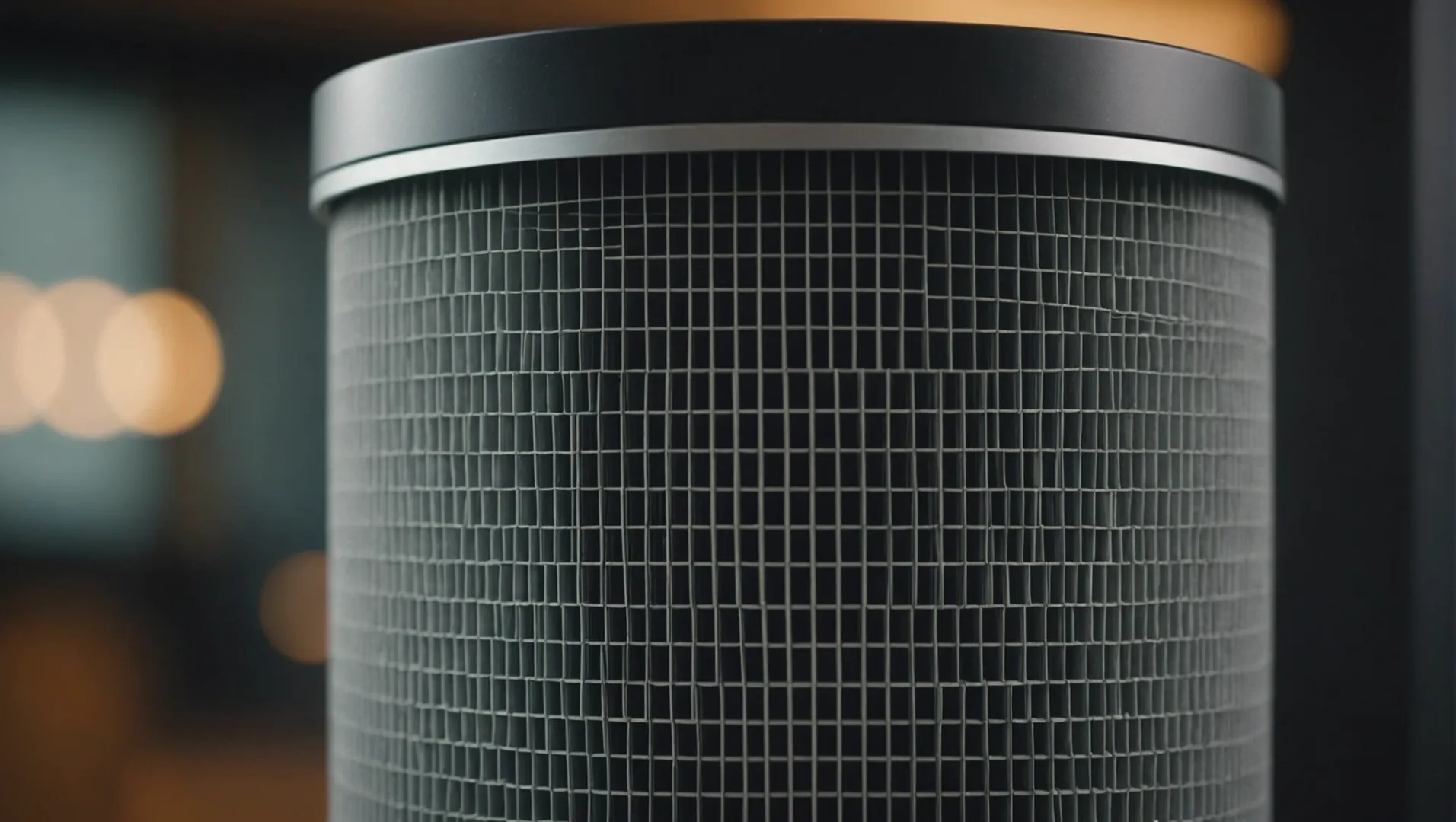
Механика HEPA Фильтры
HEPAФильтры, или высокоэффективные фильтры воздуха с твердыми частицами, работают, задерживая загрязняющие вещества несколькими способами: перехватом, уплотнением и диффузией. Когда воздух проходит через фильтр:
- Перехват происходит, когда частицы следуют за потоком воздуха и прилипают к волокнам.
- Импакция происходит, когда крупные частицы сталкиваются непосредственно с волокнами.
- Диффузия воздействует на более мелкие частицы, заставляя их двигаться нестабильно и в конечном итоге задерживаться.
Почему HEPA эффективен
Слоистая волокнистая структура HEPA Фильтры способны улавливать частицы разного размера. Эта уникальная конструкция позволяет им удалять пыль, споры плесени, пыльцу и даже некоторые бактерии, которые часто вызывают аллергию.
Например, в то время как Правда HEPA фильтры1 сертифицированы для улавливания 99,97% частиц диаметром 0,3 микрона, не все HEPA-подобные фильтры соответствуют этому стандарту. Понимание этого различия очень важно при выборе воздухоочистителя.
Соображения при выборе HEPA Фильтры
При покупке воздухоочистителя с HEPA фильтр, рассмотрите:
- Затраты на замену фильтров: Регулярная замена обеспечивает оптимальную производительность.
- Уровень шума: Некоторые модели могут работать громче при более высоких настройках.
- Размер и зона покрытия: Убедитесь, что очиститель соответствует размеру вашей комнаты.
Сравнительная таблица поможет проиллюстрировать эти соображения:
| Характеристика | Важность |
|---|---|
| Замена фильтра | Необходим для поддержания эффективности |
| Уровни шума | Подумайте, будет ли устройство использоваться в спальне |
| Зона покрытия | Для эффективного использования должен соответствовать размеру помещения |
Понимая эти аспекты, потребители могут принимать взвешенные решения при покупке воздухоочистителя для удовлетворения конкретных потребностей.
Фильтры HEPA задерживают 99,97% частиц размером 0,3 микрона.Правда
Настоящие HEPA-фильтры сертифицированы для улавливания такого процента мелких частиц.
HEPA-подобные фильтры соответствуют тем же стандартам, что и фильтры True HEPA.Ложь
HEPA-подобные фильтры не соответствуют стандарту эффективности 99,97% True HEPA.
Существуют ли технологии очистки воздуха, которые не эффективны для борьбы с плесенью?
Выбирая правильный воздухоочиститель, необходимо понимать, какие технологии действительно эффективны в борьбе с плесенью.
В то время как HEPA Фильтры отлично справляются с улавливанием спор плесени, а такие технологии, как генераторы озона и некоторые ультрафиолетовые лампы, неэффективны для удаления плесени. Эти технологии могут не полностью устранять частицы плесени и иногда могут представлять опасность для здоровья при неправильном использовании, что делает HEPA фильтры - более надежный выбор для борьбы с плесенью.

Понимание технологий очистителей воздуха
Чтобы эффективно бороться с плесенью, важно различать различные технологии очистки воздуха и их возможности. Давайте рассмотрим наиболее распространенные технологии и их эффективность в борьбе с плесенью.
-
HEPA Фильтры
Высокоэффективный воздух с твердыми частицами (HEPA) фильтры известны своей способностью задерживать микроскопические частицы, включая споры плесени, с эффективностью до 99,97%. Они особенно эффективны, поскольку улавливают частицы размером всего 0,3 микрона. Это делает HEPA-оборудованные очистители2 Идеально подходит для тех, кто хочет избавиться от плесени и других аллергенов в своем доме.
-
Генераторы озона
Генераторы озона утверждают, что они нейтрализуют запахи и загрязнения в воздухе. Однако их не рекомендуется использовать для борьбы с плесенью, поскольку они в основном полагаются на химическое взаимодействие, которое не позволяет адекватно удалять споры плесени. Более того, озон может вызывать раздражение дыхательных путей и усугублять симптомы астмы.
-
Ультрафиолетовый (УФ) свет
В некоторых очистителях воздуха используется технология ультрафиолетового излучения, направленная на уничтожение микроорганизмов, таких как бактерии и вирусы. Хотя ультрафиолетовые лампы в очистителях воздуха потребительского класса эффективны в определенных условиях, они недостаточно мощны, чтобы полностью уничтожить споры плесени без длительного воздействия, что делает их менее эффективными по сравнению с HEPA фильтры.
-
Фильтры с активированным углем
Активированный уголь отлично справляется с удалением запахов и ЛОС (летучие органические соединения), но не эффективно улавливает споры плесени. Сочетание активированного угля с HEPA Фильтрация может улучшить качество воздуха, но не только решить проблему плесени.
-
Ионные очистители воздуха
Эти устройства выпускают заряженные ионы, которые прикрепляются к частицам воздуха, заставляя их оседать на поверхностях, а не вдыхаться. Хотя они могут уменьшить количество пыли в воздухе, они мало способствуют непосредственному уничтожению спор плесени и требуют регулярной очистки для предотвращения повторного взвешивания частиц.
Делайте осознанный выбор
Выбирая очиститель воздуха, отдавайте предпочтение тем, у которых есть True HEPA фильтры, если ваша главная задача - удаление плесени. Кроме того, обратите внимание на модели, сочетающие в себе HEPA с другими технологиями, такими как активированный уголь, для более широкого улучшения качества воздуха. Помните, что эффективность воздухоочистителя также зависит от правильного ухода за ним и размера помещения, которое он должен обслуживать. Оценка этих факторов поможет вам сделать лучший выбор3 для ваших нужд.
Фильтры HEPA задерживают 99,97% спор плесени.Правда
Фильтры HEPA задерживают частицы размером до 0,3 микрона, включая споры плесени.
Генераторы озона эффективно удаляют споры плесени.Ложь
Генераторы озона недостаточно эффективно удаляют споры плесени и могут нанести вред здоровью.
Какие характеристики следует искать в очистителе воздуха?
Правильный выбор воздухоочистителя может существенно повлиять на качество воздуха в помещении, но каким характеристикам следует отдать предпочтение?
При выборе очистителя воздуха отдавайте предпочтение таким характеристикам, как True HEPA фильтры, CADR рейтинги, уровни шума и интеллектуальные возможности для обеспечения оптимальной производительности и удобства.
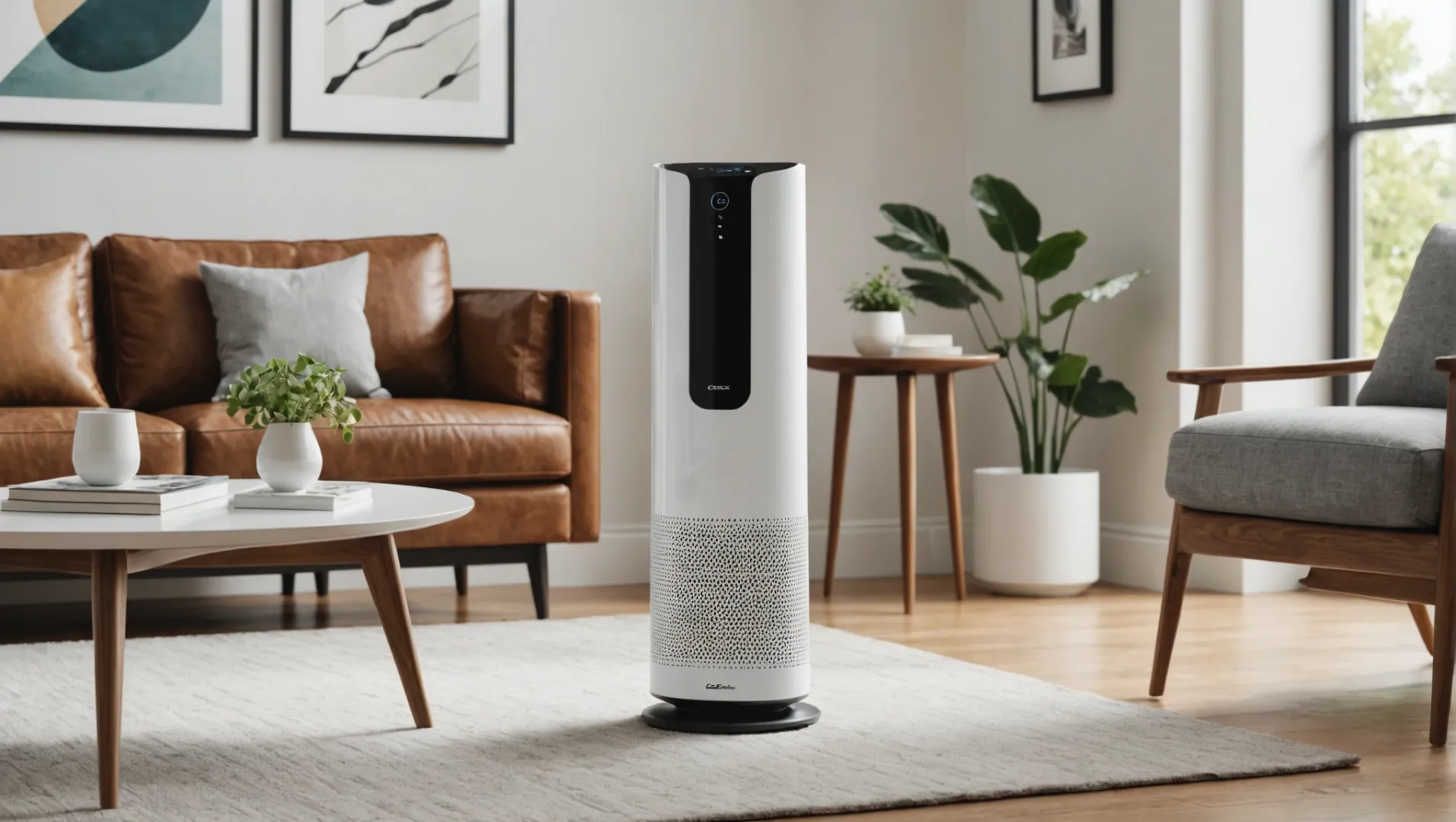
Правда HEPA Фильтры: Золотой стандарт
Правда HEPA (High-Efficiency Particulate Air) фильтры известны своей способностью улавливать 99,97% частиц размером 0,3 микрона. Это делает их очень эффективными в борьбе с пылью, пыльцой, спорами плесени и другими аллергенами. Покупая воздухоочиститель, убедитесь, что на нем указано "True HEPA', чтобы гарантировать наилучшую фильтрацию.
CADR Рейтинги: Понимание производительности
Коэффициент подачи чистого воздуха (CADR) - это важный показатель, который указывает на объем чистого воздуха, производимого воздухоочистителем в минуту. Более высокий CADR Это означает более быструю уборку больших пространств. Ищите модели с высоким CADR чтобы обеспечить эффективную очистку воздуха. При оценке этих показателей учитывайте конкретные потребности вашего помещения.
| Загрязнитель | Рекомендуем CADR |
|---|---|
| Дым | 100+ |
| Пыль | 200+ |
| Пыльца | 300+ |
Уровни шума: Обеспечение тишины
Шум может быть существенным фактором, особенно в спальнях или рабочих помещениях. Некоторые воздухоочистители работают тихо, в то время как другие могут быть более навязчивыми. Проверьте уровни децибел (дБ), указанные производителями. Модели с "спящим режимом" или с тихим режимом работы могут быть полезны для чувствительных помещений.
Интеллектуальные возможности: Удобство на кончиках пальцев
Современные воздухоочистители часто оснащаются такими интеллектуальными функциями, как подключение к Wi-Fi, управление через приложения и совместимость с голосовыми помощниками. Эти функции позволяют контролировать качество воздуха, удаленно регулировать настройки и планировать работу в соответствии с вашими потребностями. Такие функции обеспечивают удобство и эффективную работу воздухоочистителя.
Дополнительные технологии: Что работает, а что нет
Пока правда HEPA фильтры необходимы, некоторые воздухоочистители оснащены дополнительными технологиями, такими как ультрафиолетовое излучение или ионизаторы. Однако они не всегда эффективны против всех типов загрязнителей. Например, ультрафиолетовое излучение менее эффективно против спор плесени и аллергенов. Оцените необходимость и эффективность этих дополнительных функций, прежде чем принимать решение.
Чтобы сделать осознанную покупку, изучите HEPA сравнение эффективности фильтров4 и лучший CADR-рейтинговые очистители воздуха5 для детального изучения этих важнейших аспектов.
Фильтры HEPA задерживают 99,97% частиц размером 0,3 микрона.Правда
Фильтры истинного HEPA предназначены для эффективного улавливания очень мелких частиц.
Ультрафиолетовое излучение в воздухоочистителях очень эффективно борется с плесенью.Ложь
Ультрафиолетовый свет менее эффективен в борьбе со спорами плесени и аллергенами.
Могут ли очистители воздуха помочь справиться с перхотью домашних животных и пылевыми клещами?
Перхоть домашних животных и пылевые клещи могут вызывать аллергию, поэтому многие задаются вопросом, могут ли очистители воздуха принести облегчение.
Очистители воздуха с функцией True HEPA фильтры эффективно задерживают перхоть домашних животных и пылевых клещей, значительно уменьшая количество аллергенов в доме. Задерживая частицы размером до 0,3 микрона, эти очистители улучшают качество воздуха и помогают облегчить симптомы аллергии, связанные с домашними животными и пылью.
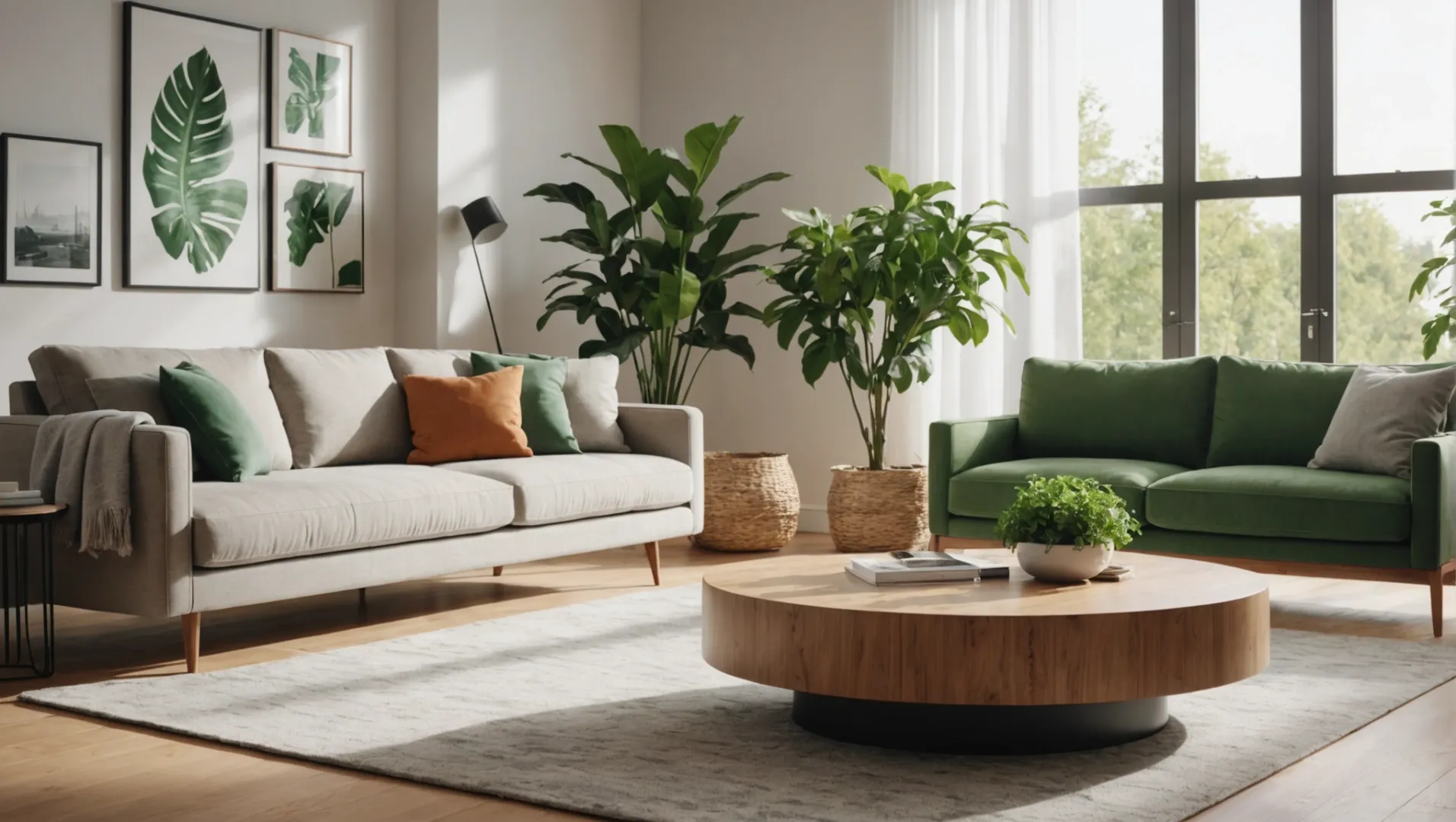
Понимание перхоти домашних животных и пылевых клещей
Перхоть домашних животных состоит из крошечных, даже микроскопических частичек кожи, которые выделяют кошки, собаки, грызуны, птицы и другие животные с мехом или перьями. Пылевые клещи, с другой стороны, - микроскопические существа, которые процветают в теплой и влажной среде и питаются клетками человеческой кожи. И те, и другие являются распространенными аллергенами, которые могут усугублять симптомы астмы и аллергии.
Роль HEPA Фильтры
Высокоэффективный воздух с твердыми частицами (HEPA) фильтры предназначены для улавливания 99,97% частиц размером 0,3 микрона и более. К ним относятся перхоть домашних животных и частицы пылевых клещей. При использовании воздухоочистителей, оснащенных HEPA фильтры, вы можете значительно снизить концентрацию этих аллергенов в вашем доме.
Преимущества:
- Устранение аллергии: Регулярное использование Правда HEPA очиститель воздуха6 может уменьшить симптомы аллергии, задерживая в воздухе частицы шерсти домашних животных и пылевых клещей.
- Улучшение качества сна: Уменьшение количества аллергенов приводит к улучшению дыхания ночью, что потенциально улучшает качество сна.
Дополнительные соображения
В то время как HEPA Фильтры эффективно задерживают перхоть домашних животных и пылевых клещей, но не могут полностью устранить их из вашего помещения. Регулярная уборка, например, пылесос с HEPA-Пылесос с фильтром и частая стирка постельного белья, а также использование очистителей воздуха.
Кроме того, рассмотрите воздухоочистители с фильтрами из активированного угля для устранения запахов, связанных с домашними животными. Такое сочетание может улучшить общее качество воздуха в помещении.
Выбор правильного очистителя воздуха
Выбирая воздухоочиститель для борьбы с перхотью домашних животных и пылевыми клещами, обратите внимание на следующие характеристики:
- Правда HEPA Сертификация: Обеспечивает соответствие фильтра строгим стандартам по удалению твердых частиц.
- Коэффициент подачи чистого воздуха (CADR): Указывает объем очищенного воздуха в минуту; более высокие цифры означают более быструю очистку.
- Зона покрытия: Для оптимальной работы подберите мощность очистителя в соответствии с размером вашей комнаты.
Понимание того, как различные очистители воздуха7 и их эффективность, вы сможете принимать взвешенные решения по улучшению микроклимата в помещении.
Фильтры HEPA задерживают 99,97% частиц размером 0,3 микрона и более.Правда
Фильтры HEPA предназначены для улавливания практически всех частиц такого размера, включая аллергены.
Очистители воздуха с фильтрами HEPA устраняют всю перхоть домашних животных.Ложь
Несмотря на свою эффективность, фильтры HEPA не могут полностью удалить всю перхоть домашних животных из окружающей среды.
Заключение
Инвестиции в качественный HEPA Очиститель воздуха может значительно улучшить качество воздуха в помещении, удаляя пыль, плесень и аллергены. Для достижения наилучших результатов обратите внимание на технологию и сертификацию. Начните дышать чище уже сегодня!
-
Узнайте, чем фильтры True HEPA отличаются от менее эффективных HEPA-подобных вариантов..: True HEPA отличается тем, что стабильно улавливает 99,97% частиц размером до 0,3 микрона, что делает его очевидным выбором для критически важных применений, таких как хирургические ... ↩
-
Поймите, как фильтры HEPA эффективно улавливают споры плесени: Исследования показали, что при правильном использовании фильтры HEPA удаляют из воздуха от 99,97% до 99,99% спор плесени. Любые споры плесени, которые попадают в ловушку ... ↩
-
Узнайте о ключевых аспектах выбора эффективного очистителя воздуха: Что такое воздухоочиститель? - Учитывайте размеры вашего помещения - Учитывайте типы фильтров - Учитывайте, как сильно шумит очиститель воздуха - Учитывайте его обслуживание ... ↩
-
Поймите различия в эффективности HEPA-фильтров и их влияние на качество воздуха: Они протестированы и сертифицированы для улавливания не менее 99,97% частиц размером до 0,3 микрона. С другой стороны, "HEPA-подобные" или "HEPA-типа" ... ↩
-
Ознакомьтесь с высокоэффективными воздухоочистителями с отличными показателями CADR для более чистого воздуха: Medify и Jaspr имеют одни из самых высоких показателей CADR. ↩
-
Узнайте об эффективности и преимуществах фильтров True HEPA для удаления аллергенов: Фильтры True HEPA служат дольше и могут работать 24 часа в сутки 365 дней в году. Вы можете эффективно удалять пыль, перхоть домашних животных, пыльцу, плесень, бактерии, ... ↩
-
Откройте для себя лучшие модели воздухоочистителей для борьбы с аллергией на перхоть домашних животных..: 8 лучших воздухоочистителей для борьбы с шерстью, запахами и перхотью домашних животных, согласно нашим тестам. В наш список вошли такие ведущие бренды, как Dyson, Bissell и Levoit. ↩


